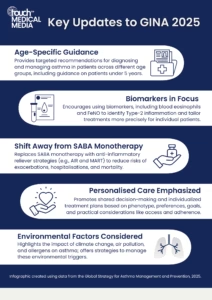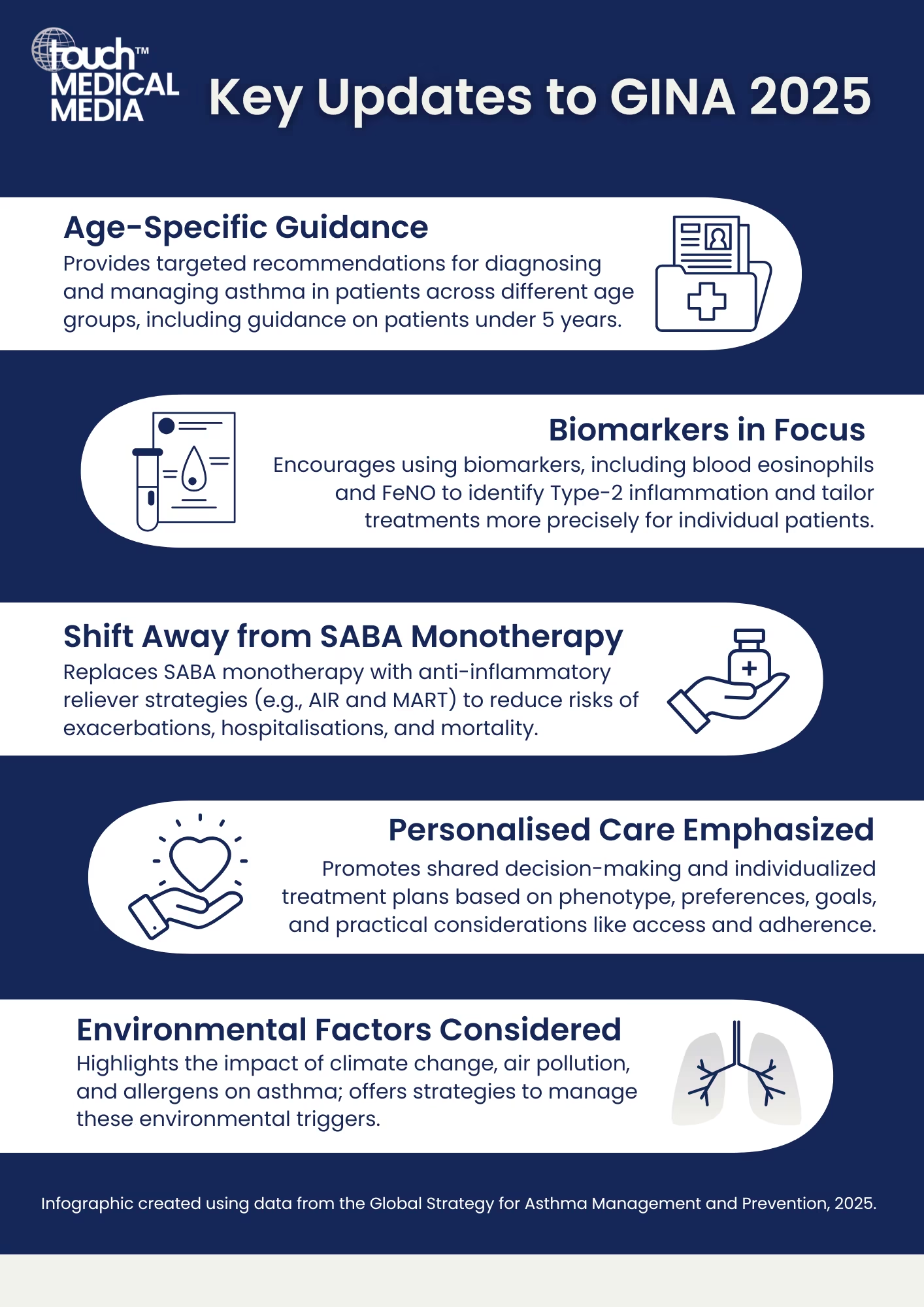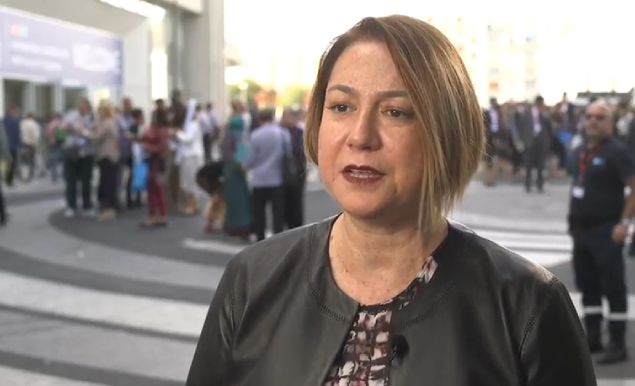 The Global Initiative for Asthma (GINA) has released its 2025 strategy report, providing updated guidance on asthma diagnosis and management.1 The updates detail changes concerning personalised care, environmental considerations, and treatment approaches that move away from reliance on short-acting beta-agonists (SABA). In this article, we summarise the key updates in GINA 2025, which reflect a more personalised, age-specific, and proactive approach to asthma management.
The Global Initiative for Asthma (GINA) has released its 2025 strategy report, providing updated guidance on asthma diagnosis and management.1 The updates detail changes concerning personalised care, environmental considerations, and treatment approaches that move away from reliance on short-acting beta-agonists (SABA). In this article, we summarise the key updates in GINA 2025, which reflect a more personalised, age-specific, and proactive approach to asthma management.
Discover the key updates in GINA 2025:
- Age-specific recommendations: The guidelines offer specific recommendations for diagnosing and managing asthma in adults and adolescents, children between 6–11 years, and children 5 years and younger, addressing the unique challenges of this young population.
- Biomarker integration: GINA 2025 incorporates the use of biomarkers, including the use of blood eosinophils and FeNO, to identify patients with Type-2 inflammation, a strategy that can help guide treatment decisions and personalise therapy. The report also discusses factors that can affect biomarker measurements in patients, including allergen exposure and smoking.
- SABA-free pathways: In a major shift, GINA 2025 no longer recommends using SABA monotherapy, encouraging the use of alternatives, such as anti-inflammatory reliever (AIR) therapy and maintenance and reliever therapy (MART). The report also emphasizes the risks associated with SABA overuse, including increased exacerbation rates and mortality.
- Patient engagement and individualised treatment: GINA 2025 continues to emphasise the importance of shared decision-making between patients and healthcare providers when selecting asthma treatments. The guidelines recommend tailoring treatments to patients, taking into account individual preferences, clinical features and asthma phenotype, the patient’s goals and practical issues, including accessibility and adherence.
- Monitoring and adherence: The report recommends routine assessment of symptom control, risk factors, adherence, and inhaler technique and encourages using structured treatment adjustment algorithms to guide therapy escalation or de-escalation based on clinical response.
- Climate change impact acknowledged: GINA 2025 acknowledges the impact of extreme weather and climate change on patients with asthma, noting factors such as increased pollen counts, air pollution, and extreme temperatures, and includes suggestions for managing these environmental factors.
- Difficult-to-treat and severe asthma: GINA 2025 offers a structured approach to managing more complex cases, recommending a stepwise process to confirm a diagnosis, assess modifiable factors (e.g., adherence, comorbidities), and optimize management. The report also provides criteria for referral to specialists and for considering biologic therapies in severe, uncontrolled asthma.
- Asthma exacerbation management: The updated guidelines also include strategies for early recognition and prevention of asthma exacerbations and reinforce the importance of written asthma action plans tailored to patient treatment regimens. The report includes age-specific recommendations for acute management and follow-up care post-exacerbation.
The GINA 2025 updates mark a shift toward a more refined, personalized, and proactive approach to asthma management for practicing physicians. Clinicians are now encouraged to tailor treatment plans based on comprehensive patient assessments, individual preferences, and age-specific recommendations. The incorporation of biomarkers into the guidelines further supports more precise, personalized treatment decisions. Additionally, there is an increased emphasis on preventing asthma exacerbations, not only through pharmacological interventions, but also by addressing external factors such as environmental triggers.
References:
- Global Initiative for Asthma. Global Strategy for Asthma Management and Prevention. 2025. Available at: https://ginasthma.org/wp-content/uploads/2025/05/GINA-Strategy-Report_2025-WEB-WMS.pdf (accessed 7 July 2025).
Further content in asthma and paediatric respiratory medicine.
Editor: Victoria Smith, Senior Content Editor.
Disclosures: This article was created by the touchRESPIRATORY team utilizing AI as an editorial tool (ChatGPT (GPT-4o) [Large language model]. https://chat.openai.com/chat.) The content was developed and edited by human editors. No funding was received in the publication of this article.
Cite: GINA 2025 Brings Personalized, Proactive Changes to Asthma Care. touchRESPIRATORY. 16 July 2025.
Similar content: GINA 2024: Key Updates to optimise asthma care standards.
Register now to receive the touchRESPIRATORY newsletter!
Don’t miss out on hearing about our latest peer reviewed articles, expert opinions, conference news, podcasts and more.














